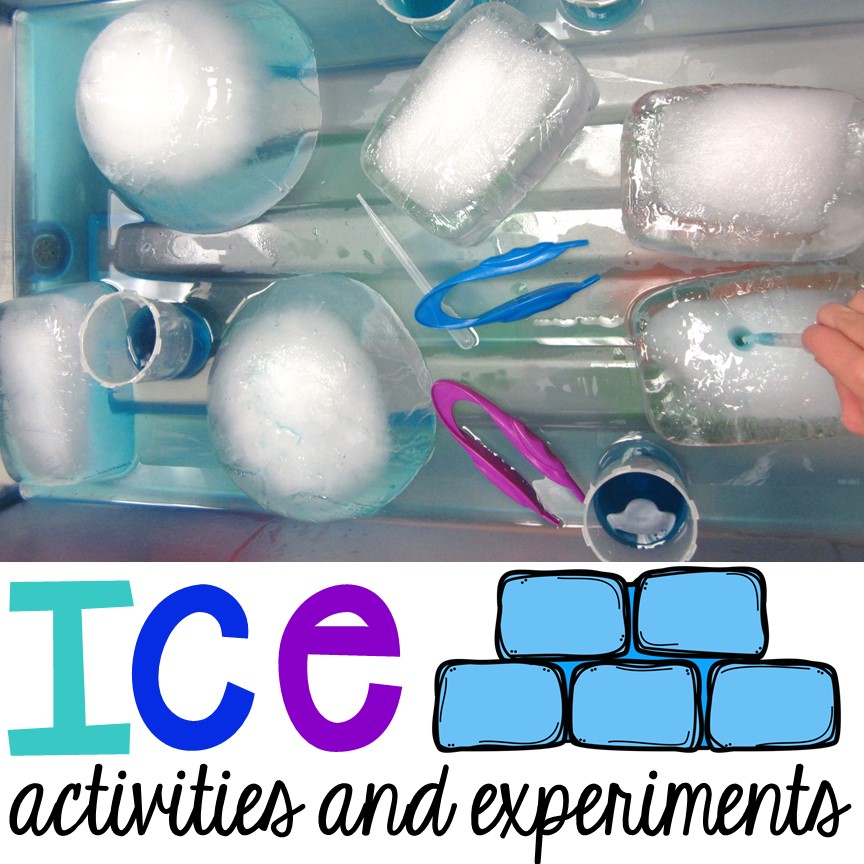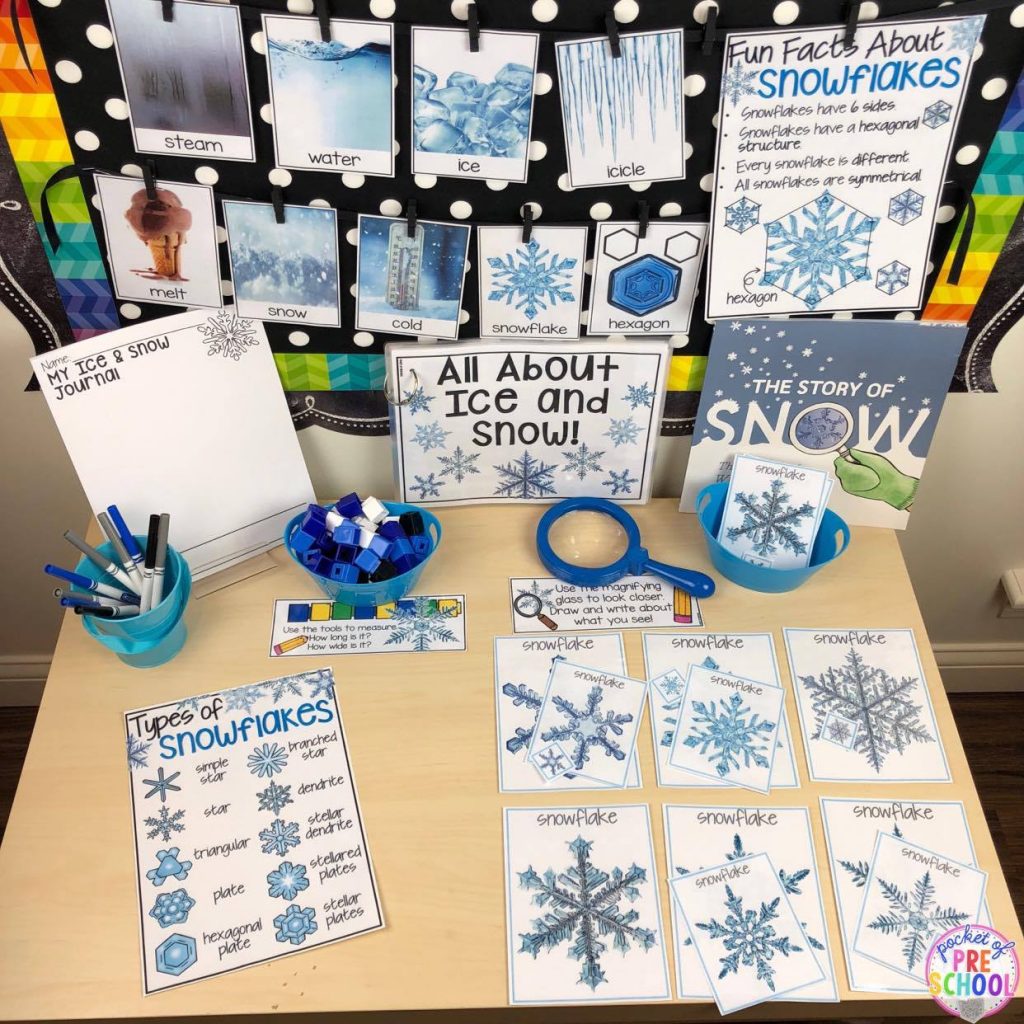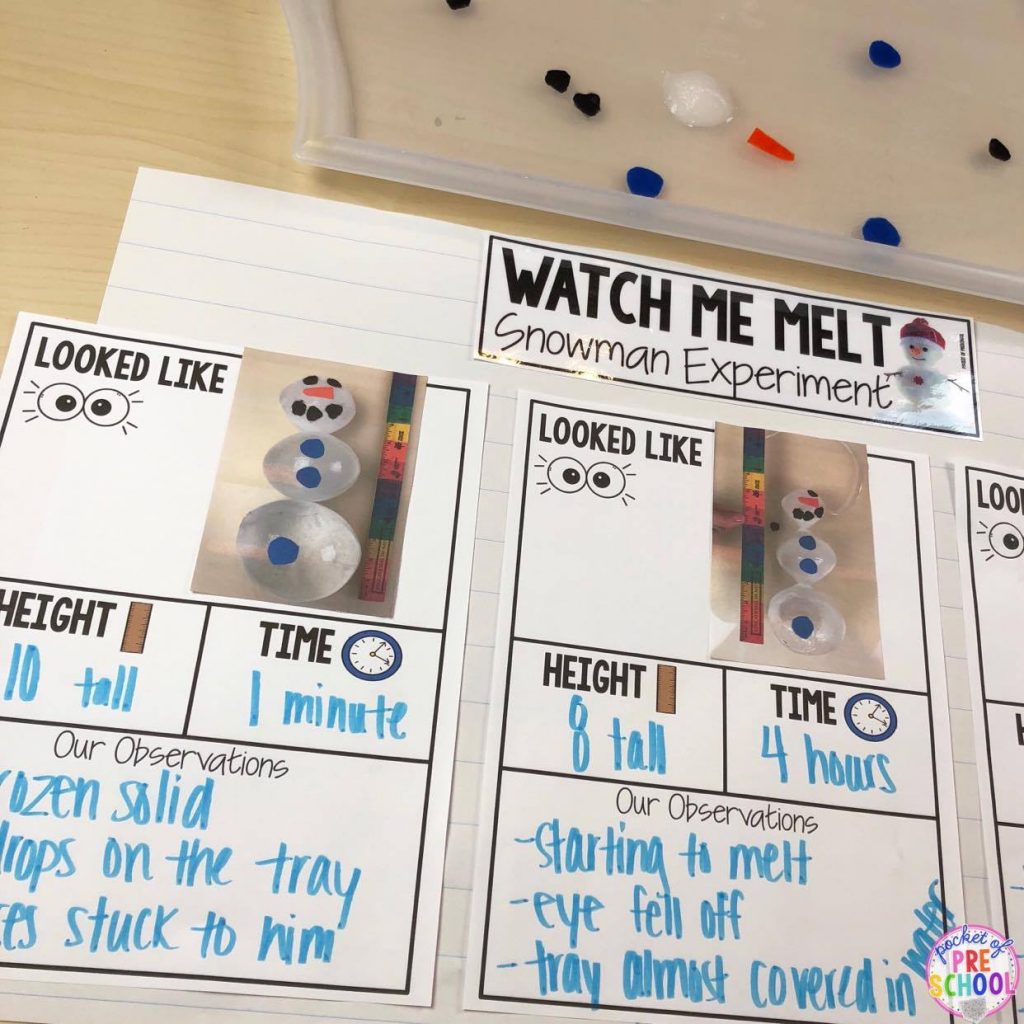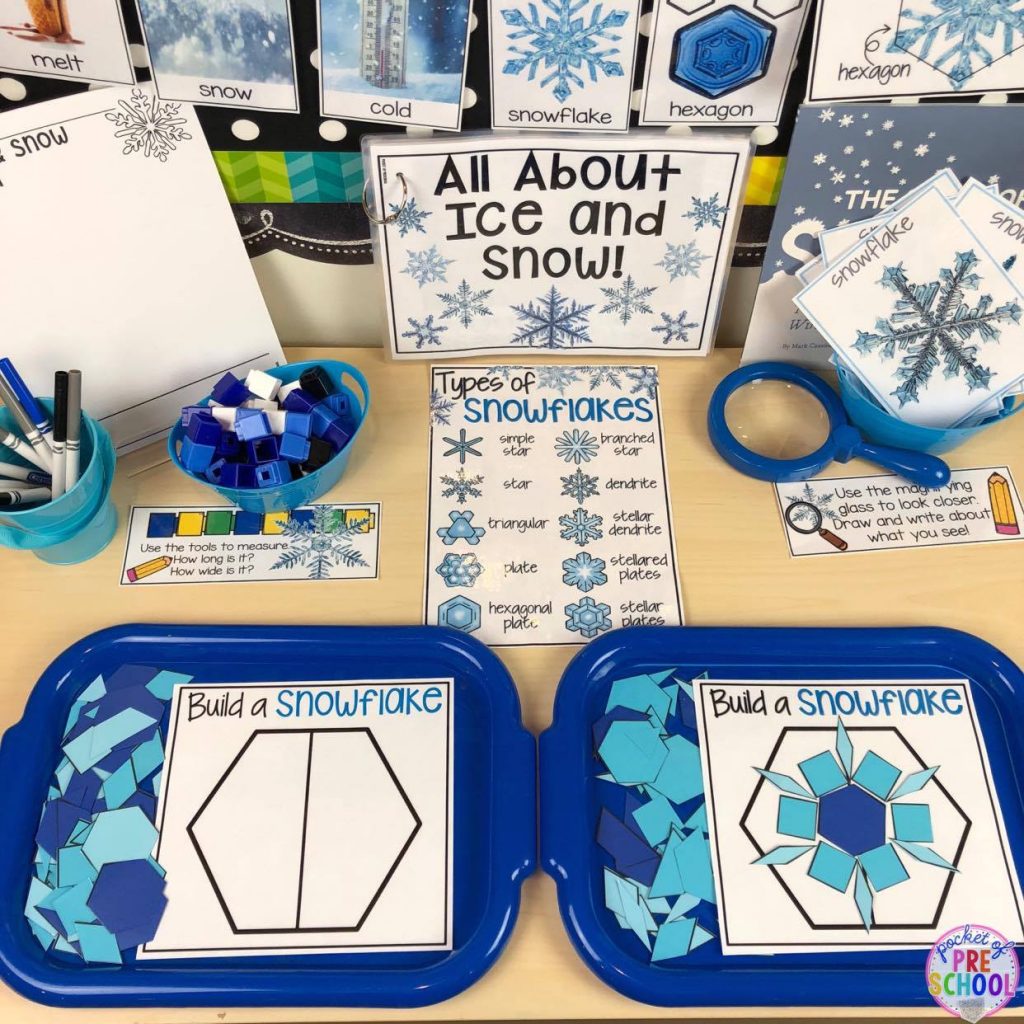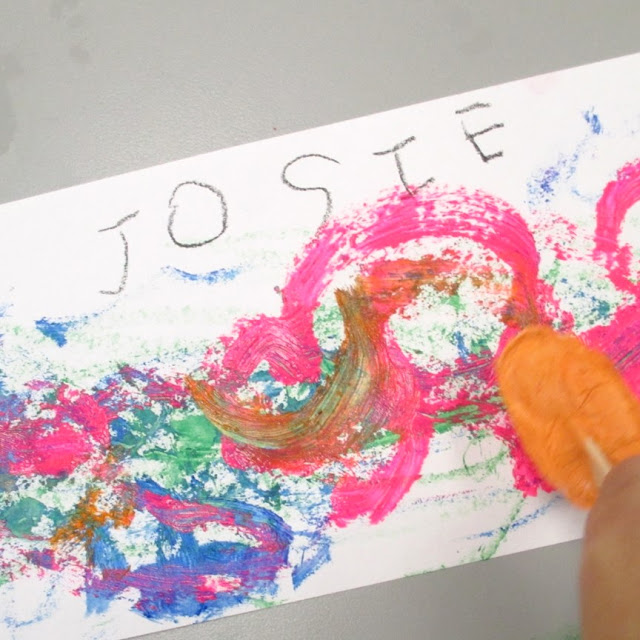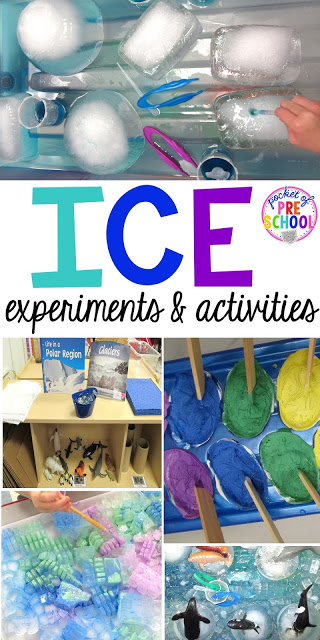When it’s SUPER cold outside, it’s the perfect time to explore ice! There are so many experiments and investigations you can do with it too. Ice changes as you investigate it which captivates their attention and gets them excited about science. Ice cab melt, break, change color, and so much more.
If you need winter centers for the whole classroom, click HERE to read a post about my favorite Winter Centers and Activities (math, literacy, fine motor, sensory, and more).
>>Grab my All About Ice and Snow Science Unit HERE <<
During our ice exploration lesson, I set up daily blocks of ice, cups of blue water, small droppers, and tweezers in the sensory table. Each morning students came in asking to explore the ice! They LOVED it!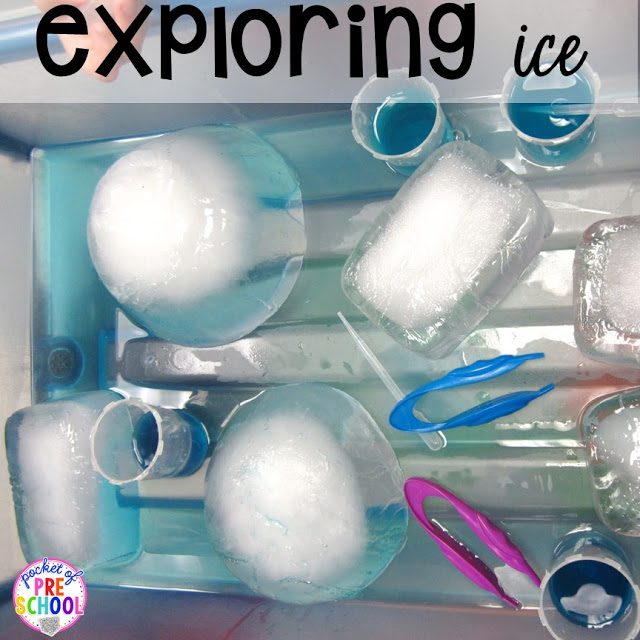
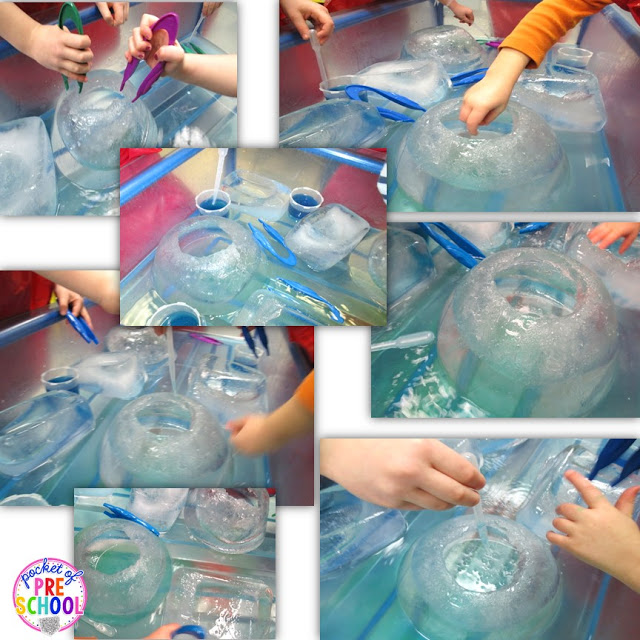
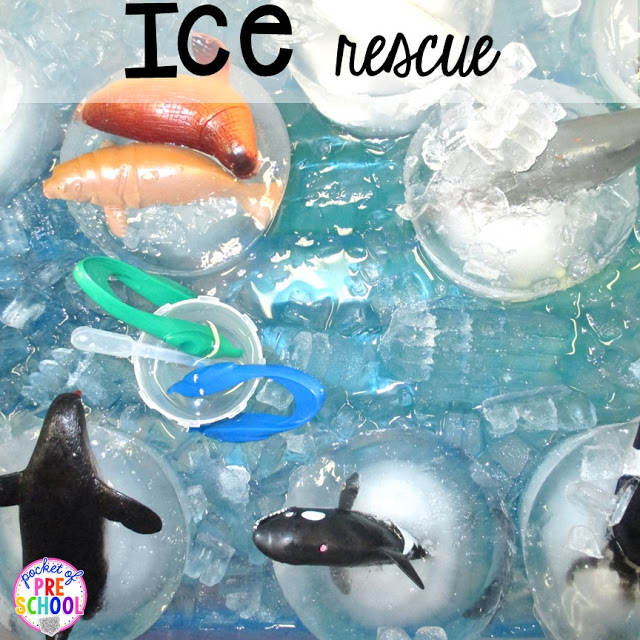
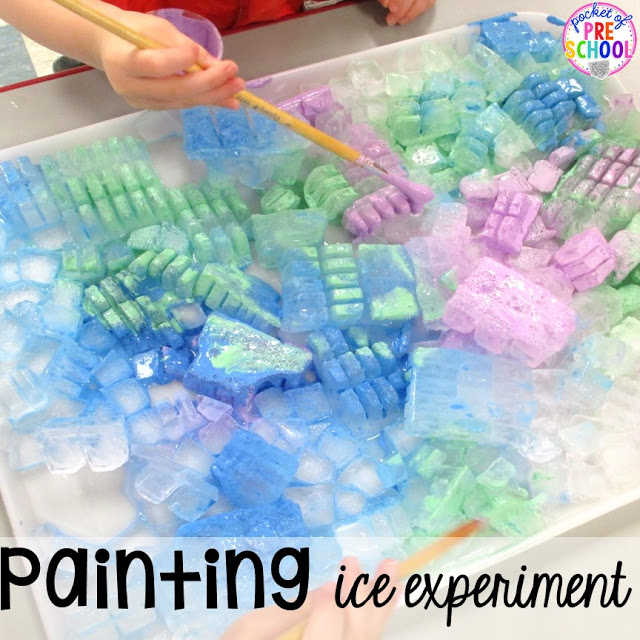
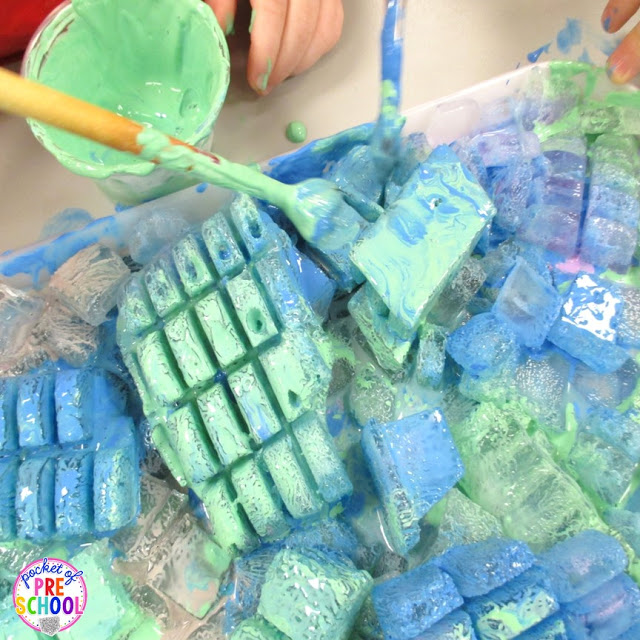
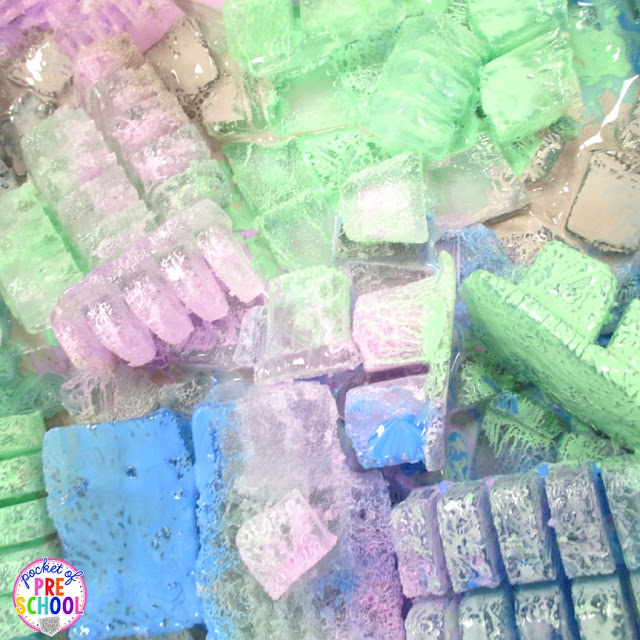
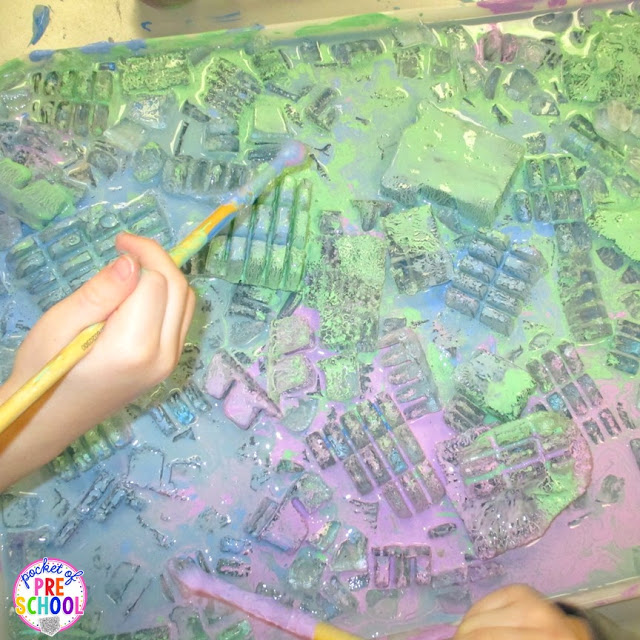
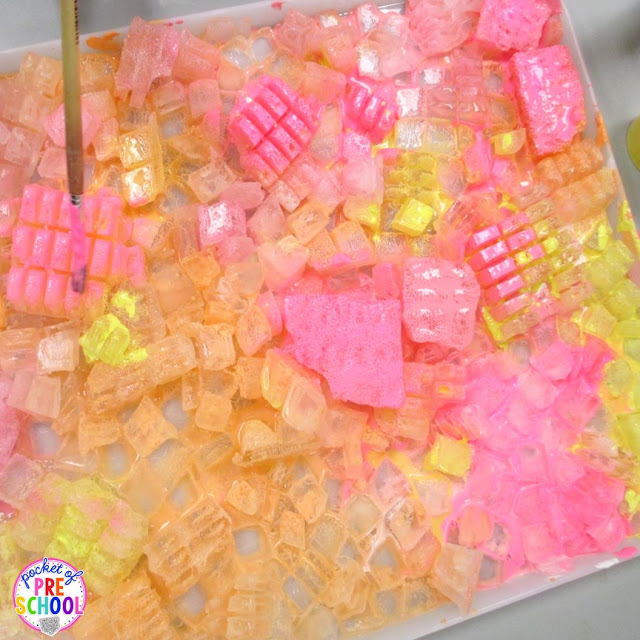
Watch Me Melt Snowman Experiment! Make a snowman by freezing water balloons overnight. Then peel off the balloon so you can create an ice snowman. Put it on a tray to observe it melt and change as the day goes. Measure it and record students’ observations just like real scientists do. Take and print photos so students can visually see how it changed.
Making Snowflakes! Set up and fun symmetry and shape activity where students are making their own snowflakes with paper or real pattern blocks. Students will develop their spatial awareness as they create the snowflakes.
Building Arctic Habitats! I wanted to set up a place in my block center that invited students to build arctic habitats. On the shelf is a variety of arctic animals, snow (white felt), water (blue textured foam paper), ice (jewels), and non-fiction books for students to use as a reference. You can also cover blocks with foil to make it look like ice. Look at all of the object substitution that students are able to do with these materials!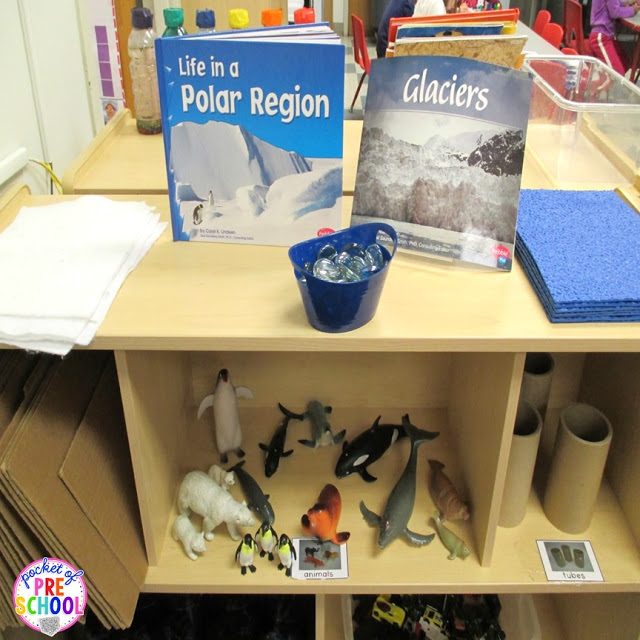
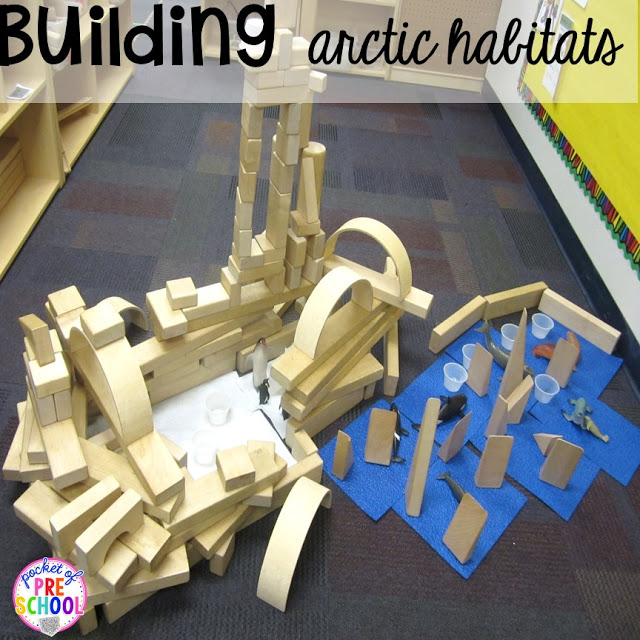
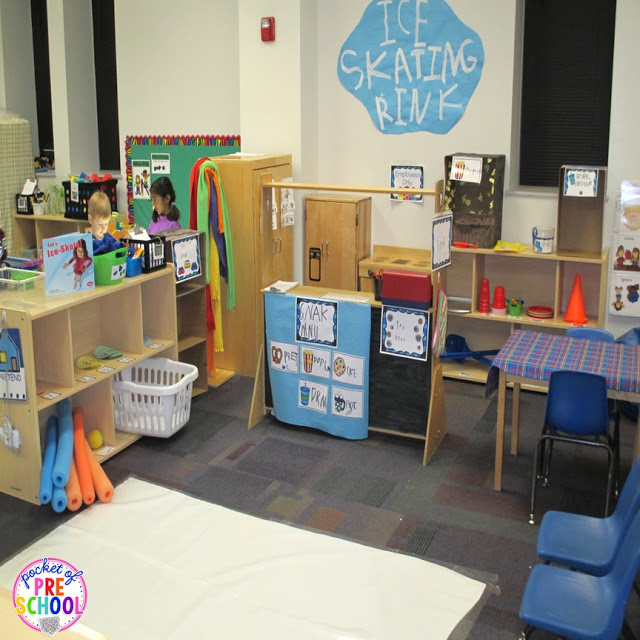
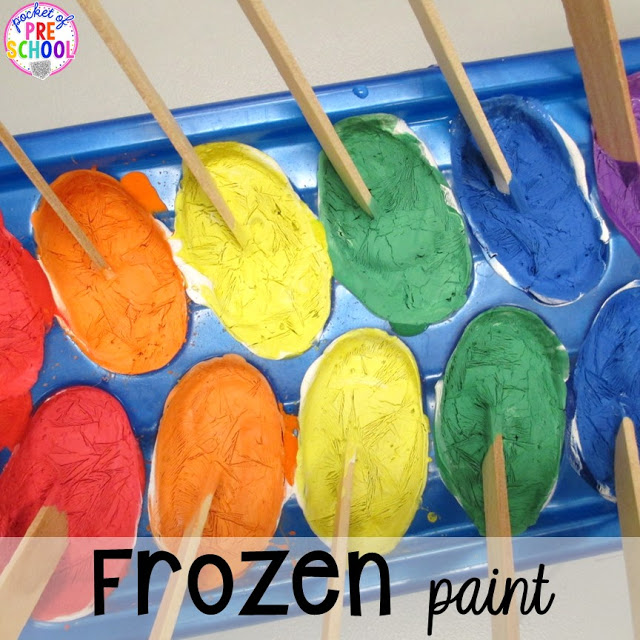
Take the ice theme all about the classroom and learn about Polar Animals! Check out THIS POST for tons of ideas!
Love it? Pin it!
Need more winter themed activities? Check out my Winter Theme Pinterest board for more inspiration.
